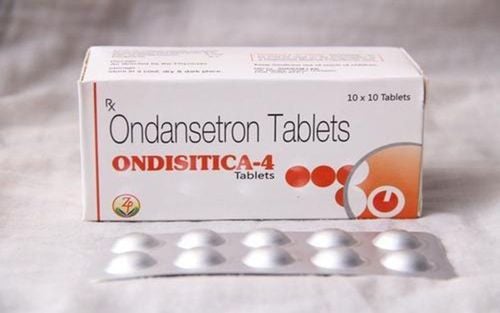This is an automatically translated article.
Tonsilectomy is a surgical procedure to remove the part of the tongue behind the V tongue. To avoid the risk of complications, risks, patients need to coordinate with all instructions of the doctor.1. Indications and contraindications for tongue base surgery
Indications: Small and medium-sized cases of cancer of the base of the tongue; Contraindications: Tumor extends beyond the base of the tongue or crosses the midline; Undifferentiated cancer, lymphoma, sarcoma.2. Preparing for surgery
Personnel: Specialist I Ear - Nose - Throat, experienced head and neck surgery and head - neck surgeon; Technical means: Set of software surgical equipment, bone cutting saw, drill saw and set to fix bone with screw brace; Patient: The doctor explains carefully about the purpose of surgery, the surgical procedure and the risk of possible complications. Patients are also assigned to perform basic tests, CT scan to assess the extent of spread, status of lymph node metastasis; Medical records: Prepare according to regulations of the Ministry of Health.3. Carry out surgery to cut the bottom of the tongue
Anesthesia: Perform endotracheal anesthesia, can open the patient's trachea; Position: The patient lies on his back, is supported with a shoulder pillow, the head is maximally supine and turned to the side of the healthy tongue. The surgeon stands on the right side of the patient, assistant 1 stands on the left, assistant 2 stands on the patient's head. The nursing assistant and the instrument table are on the lower left - opposite the surgeon; Step 1: Make an incision from the mid-point of the lower lip, around the chin to the neck, running parallel to the lower jawbone and 2 fingers away from the lower jawbone to close to the mastoid process. If combined cervical lymphadenectomy is indicated, the doctor continues to make an incision along the anterior border of the sternocleidomastoid muscle to the middle of the collarbone, dissecting the skin flap revealing the surgical field of the cervical lymph nodes and the mandibular region; Stage 2: Cervical lymphadenectomy: If N0, selective lymphadenectomy with group I, II and III lymph nodes. If N1, N2, N3, dredge lymph nodes on both sides; Stage 3: Cut the lower jaw bone; Use a saw to cut the lower jaw bone near the angle of the jaw, cut in a zigzag shape to fix it later; Stage 4: Exposing the tumor: After cutting the lower jaw bone and pulling it to the sides, the side wall of the throat will be opened, revealing the bottom of the tongue and the tumor. Surgeons take care not to injure the IX and XII cords; Stage 5: Tumor removal: The doctor uses an electric knife to cut the tumor, beyond the tumor boundary from 1.5 to 2cm, to the site of immediate biopsy of the negative margin. The tumor at the base of the tongue needs to be cut in one block with the cervical lymph node dissection; Stage 6: Closing the surgical pit: The doctor closes the bottom of the tongue in layers with Vicryl 1.0 or 2.0; suture the pharynx in layers with Vicryl 3.0 or 4.0; fix the lower jaw bone with a screw brace; place closed drainage, suture 2 layers of skin and pay attention to correct lip contour; Insert a feeding tube. Anesthesia: Perform endotracheal anesthesia, can open the patient's trachea; Position: The patient lies on his back, is supported with a shoulder pillow, the head is maximally supine and turned to the side of the healthy tongue. The surgeon stands on the right side of the patient, assistant 1 stands on the left, assistant 2 stands on the patient's head. The nursing assistant and the instrument table are on the lower left - opposite the surgeon; Step 1: Make an incision from the mid-point of the lower lip, around the chin to the neck, running parallel to the lower jawbone and 2 fingers away from the lower jawbone to close to the mastoid process. If combined cervical lymphadenectomy is indicated, the doctor continues to make an incision along the anterior border of the sternocleidomastoid muscle to the middle of the collarbone, dissecting the skin flap revealing the surgical field of the cervical lymph nodes and the mandibular region; Stage 2: Cervical lymphadenectomy: If N0, selective lymphadenectomy with group I, II and III lymph nodes. If N1, N2, N3, dredge lymph nodes on both sides; Stage 3: Cut the lower jaw bone; Use a saw to cut the lower jaw bone near the angle of the jaw, cut in a zigzag shape to fix it later; Stage 4: Exposing the tumor: After cutting the lower jaw bone and pulling it to the sides, the side wall of the throat will be opened, revealing the bottom of the tongue and the tumor. Surgeons take care not to injure the IX and XII cords; Stage 5: Tumor removal: The doctor uses an electric knife to cut the tumor, beyond the tumor boundary from 1.5 to 2cm, to the site of immediate biopsy of the negative margin. The tumor at the base of the tongue needs to be cut in one block with the cervical lymph node dissection; Stage 6: Closing the surgical pit: The doctor closes the bottom of the tongue in layers with Vicryl 1.0 or 2.0; suture the pharynx in layers with Vicryl 3.0 or 4.0; fix the lower jaw bone with a screw brace; place closed drainage, suture 2 layers of skin and pay attention to correct lip contour; Insert a feeding tube.
Phẫu thuật cắt đáy lưỡi được chỉ định với bệnh nhân ung thư đáy lưỡi nhỏ và vừa
4. Follow-up after surgery to cut the bottom of the tongue
The patient was closely monitored for bleeding, pulse and blood pressure in the recovery room after the first 24 hours of surgery; Monitor for shortness of breath without tracheostomy; Feed the patient through a catheter; The drain is usually removed after 2 - 3 days.5. Risk of adverse events and measures to deal with them
Shortness of breath: Manage by giving the patient anti-edema medication or may require tracheostomy if not open at the time of surgery; Salivary leakage, especially after postoperative radiotherapy: Treat according to standard protocol; Infection: Treatment is with appropriate antibiotics; Osteoarthritis of the mandible: Treatment according to the standard protocol. Tongue-fundectomy is indicated for the treatment of cancer of the base of the tongue when the tumor has not grown too large. Because of the possible risks after treatment, the patient's family should carefully observe the patient's signs, immediately notify the doctor if there are abnormal symptoms.Oncology Center - Vinmec International General Hospital is modernly built according to international standards, using a multi-specialist approach model in diagnosis, choosing the right treatment regimen for each patient, contribute to comprehensive patient care. Vinmec Oncology Center has outstanding advantages in cancer treatment such as:
Vinmec Convergence of experts in radiation therapy, chemotherapy and surgery, equipped with modern facilities. The most modern radiotherapy planning system and Truebeam in Southeast Asia, with the outstanding advantage of minimizing the effects of radiation on benign tissues compared to X-rays, reducing irradiation time and the risk of adverse effects. side effects for patients.) helps effectively treat common cancers: Lung, Head, neck, breast.... Vinmec Hospital can treat cancer with multi-tissue cancer treatment regimens. The method is suitable for each case, brings high treatment efficiency, provides an additional reliable cancer examination and treatment address for patients, so that patients do not have to go abroad for treatment.
Please dial HOTLINE for more information or register for an appointment HERE. Download MyVinmec app to make appointments faster and to manage your bookings easily.













